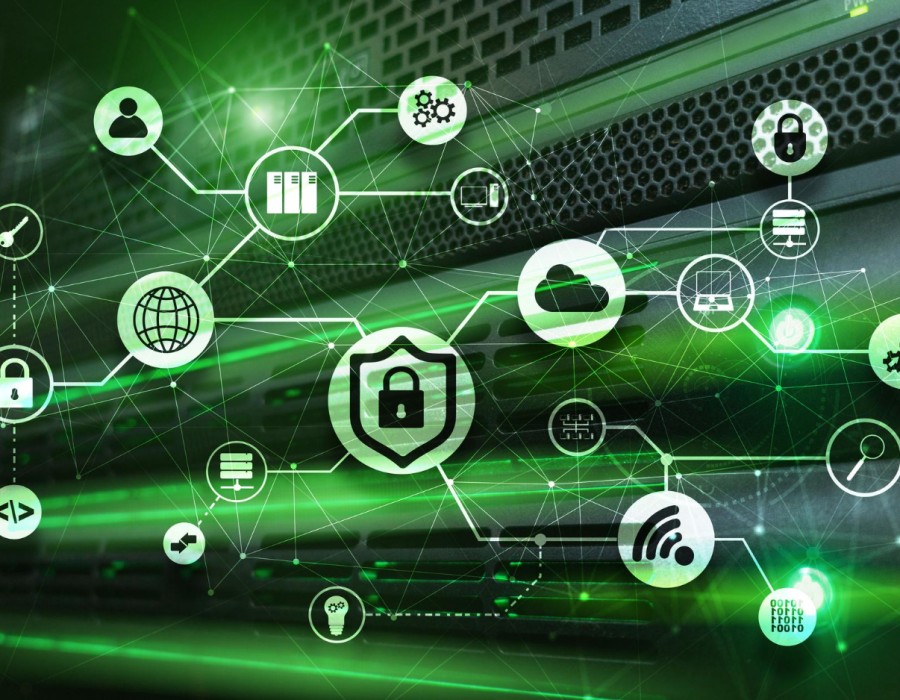What is Cybersecurity Ecosystem?
The digital world is growing at an exponential rate, and with it being so, there are more and more cyber threats out there. From ransomware attacks to phishing attacks, the risks are evolving and becoming sophisticated. This has made cybersecurity not only an issue for IT departments but a much-needed business agenda. To effectively deal with these challenges, it is the need for more than just individual tools - the need for a cybersecurity ecosystem - that organizations require.
A cybersecurity ecosystem is an organized structure that brings together persons, processes, technologies, and policies to overall secure digital assets. Instead of the elements operating in silos, they talk with each other as part of an overall defense mechanism. When done right, it helps not only to protect sensitive data but also to strengthen compliance and trust.
Important Elements of Cybersecurity Ecosystem
A robust cybersecurity ecosystem has multiple layers of defence. Each layer is important; however, its strength comes in terms of how they work together.
1. Network Security: In essence, network security is about keeping data in transit safe. Firewalls, intrusion detection systems, and secure routers are part of this shield. With the proliferation of remote work, virtual private networks (VPNs) and zero trust frameworks have also been in a core role in safeguarding networks, too.
2. Endpoint Protection: Laptops, mobile devices, and IoT (Internet of Things) devices are often the path to your network for cybercriminals. Endpoint protection solutions, such as antivirus tools, device management software, and security and advanced detection solutions, run continuous monitoring of these devices to ensure a threat doesn't spread.
3. Identity and Access Management(IAM): At a global level, the cybersecurity ecosystem is founded on access control to what? IAM ensures that only the right people have access to sensitive information, using solutions like multi-factor authentication and role-based access control.
4. Risk & Compliance Management: In today's regulatory environment, data security is not about compliance with the law-it's about security. Organizations require both risk assessments and compliance audits, as well as monitoring systems to ensure they live within the framework of, for example, GDPR, HIPAA, or PCI DSS.
5. Threat Intelligence: Cybersecurity services are a function of intelligence-based decisions, too. Real-time threat intelligence can provide organisations with insights into imminent risks, meaning they don't need to focus on reacting, but rather preparing for them.
6. Security Awareness & Training: Employees clicking off suspect links or becoming victims of a phishing scam can compromise the toughest of systems. That's why it's important to be trained and aware as an element of the ecosystem.
Usage of Cybersecurity Ecosystem
A cybersecurity ecosystem isn't theoretical - in real life, it can have some very practical applications.
- Data Protection - Organizations use it to protect the customer data, Intellectual property, and Financial information.
- Business Continuity - By mitigating risks, businesses can reduce expensive downtime as a result of attacks.
- Customer Trust - Customers will more likely remain loyal to businesses that take cybersecurity seriously.
- Regulatory Compliance - Ecosystem is responsible for helping organizations meet compliance requirements for industries such as healthcare, finance, and retail.
- Scalability - The opportunity here for businesses that are looking to scale is that the ecosystem moves with it and incorporates new tools, policies, and technologies.
- This framework ensures that cybersecurity is not a one-time project but an ongoing, evolving process.
Cybersecurity Ecosystem Versus Physical Security
While the cyber world is being safeguarded by cybersecurity, the physical world is protected by physical security. Both of them are vital, and they have some similarities. Here’s a quick comparison:
The two are orthogonal to each other-as a company installs CCTVs they have to firewalls. Add together both the ecosystem and play their part to be able to create overall resiliency.
Conclusion
The cybersecurity ecosystem is more than a buzzword, it is a necessity of today's digital-first world. However, it is bringing together technology, policies, intelligence, and human awareness to form a dynamic defense system that is able to adapt to changing risks. From protecting networks to ensuring regulatory compliance, it's an important component to continued business and customer trust.
While both physical and digital security have different tools and considerations, the general principle of both is the same; to protect those things most important. Building a solid cybersecurity ecosystem is no longer an option - it's part of today's business strategy.
FAQs
1. Why is it so important to be cyber secure?
Cybersecurity is the protection of sensitive information, from theft, misuse and cyber attacks. Without it, businesses are risking legal trouble such as data breaches, financial damage and damage to reputation. A good defense is a crucial element to effective long term survival in the digital age.
2. How network security is working for Cybersecurity?
Network security play the initial role as a security mechanism by regulation of access, monitoring of data traffic and preventing intrusion. Firewalls, VPN and monitoring tools help to ensure vulnerabilities are not exploitable by unauthorised users;
3. What is SASE cybersecurity?
A new modern architecture that combines network security and wide area networking (WAN) is united. It works such that it provides you security services direct via the cloud, which means it's perfect for businesses having remote employees, and businesses that operates globally.
4. What endpoint protection tools are used?
Common tools include antivirus software and endpoint detection & response systems (EDR) and mobile device management (MDM). These came capture tools that monitor devices and block threats and IT teams can take remote control of the security of the devices.





Comments